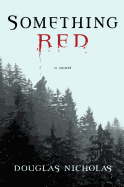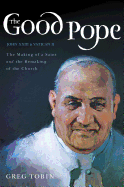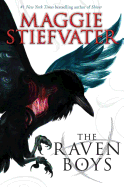Seattle Arts & Lectures at 25
 Earlier this week I attended a reading at Seattle Arts & Lectures for T.C. Boyle, whose latest novel, San Miguel, was just reviewed in Shelf Awareness. Boyle lived up to his reputation as a witty raconteur, and delighted the crowd by reading his short story "The Lie," dedicated to everyone who has a job they don't like very much. During the q&a, he got the usual questions ("How does one become a writer?") plus a few new ones. A reader, commenting on Boyle's extensive vocabulary, said that she enjoyed looking unfamiliar words up on her e-reader as she read. He responded that looking up words while reading, at least for fiction, pulls you out of the narrative and is to be discouraged. Boyle was a popular addition to the pantheon of SAL authors.
Earlier this week I attended a reading at Seattle Arts & Lectures for T.C. Boyle, whose latest novel, San Miguel, was just reviewed in Shelf Awareness. Boyle lived up to his reputation as a witty raconteur, and delighted the crowd by reading his short story "The Lie," dedicated to everyone who has a job they don't like very much. During the q&a, he got the usual questions ("How does one become a writer?") plus a few new ones. A reader, commenting on Boyle's extensive vocabulary, said that she enjoyed looking unfamiliar words up on her e-reader as she read. He responded that looking up words while reading, at least for fiction, pulls you out of the narrative and is to be discouraged. Boyle was a popular addition to the pantheon of SAL authors.
Seattle Arts & Lectures is celebrating 25 years of programs with acclaimed writers that "foster diverse ideas, the imagination, and a love of reading and writing." SAL was founded in 1987; in 1994 it brought to Seattle the nationally recognized Writers in the Schools program--an educational initiative that places local professional writers in public school classrooms to develop skills and spark student interest in reading and writing. SAL debuted the Poetry series in 2000, along with an adult continuing-education program on arts and culture. Over the next 12 months, SAL will be celebrating 52 of the more than 300 authors who have appeared at SAL with weekly postings. So far:
• Michael Ondaatje, who appeared in the 1999/2000 Literary Arts Series
• Rita Dove (2009-10 Poetry Series)
• Jan Morris (1993) and Pico Iyer (2008 and 2011)
• Czeslaw Milosz, who appeared in the Literary Arts Series' sixth season, on December 1, 1993
• Wendell Berry (the 23rd season) on the occasion of his August 5 birthday
• Nora Ephron, who appeared in November 2010, and Nathan Englander (1999/2000) with a remembrance of Ephron
• Playwright and screenwriter Tony Kushner
• Nigerian novelist Chinua Achebe (1997/1980)
Check the Seattle Arts & Lectures website for further installments. --Marilyn Dahl, book review editor, Shelf Awareness




 None of your translations are reprinted in the collection. Do you enjoying translating poetry; how does it differ from writing your own poems?
None of your translations are reprinted in the collection. Do you enjoying translating poetry; how does it differ from writing your own poems? Douglas Foster wrote After Mandela: The Struggle for Freedom in Post-Apartheid South Africa (Liveright), reviewed
Douglas Foster wrote After Mandela: The Struggle for Freedom in Post-Apartheid South Africa (Liveright), reviewed 











